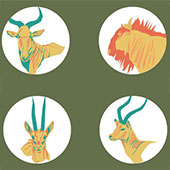Home / Case study / Visualizing ecological concepts in the Context of the Serengeti Ecosystem / Case Study - Slide Show
Design Case study
Visualizing ecological concepts in the Context of the Serengeti Ecosystem
A data visualization project
by
Design process that was followed in this project:
• Abstract
• Literature Review
- A Place Like No Other
- Abiotic components
- Biotic components
- Underlying rules of the Serengeti ecosystem
• Visualization Analysis and Design
- Data Abstraction
- Task Abstraction
- How idioms can be designed
- The What-Why-How Analysis
- The nested model: The 4 levels of validation
• Storytelling with data
- Analysis of information
- Key lessons from the book
• Scoping
• Design of Narrative
• Design Explorations
- Data
- Population
- Maps
- Climate
- Species and trophic interactions
- Concepts
- Generic species
- Migration
- Keystone effects
- Regulation
• The Prototype
- Summary of narrative
- Context
- Rules that govern ecosystems
- An interesting community of animals
- Conclusion
- Section 1 - Contextual Information
- Section 2 - The diversity of species
- Section 3 - Rules that govern ecosystems
- Section 4 - An interesting community of animals
• Plan for Evaluation
- Evaluation with end users
- Detailed evaluation plan
- Findings from the evaluation
- Limitations
• Future Scope
• Reflections & Thoughts
• Annexure
- Feedback from Stage 3
- Justification of design decisions
- Correlation VS causation
- Increase in complexity
- Integration of seemingly disconnected windows
- Task-based comparative evaluations
- Plan for evaluation from an ecology perspective
- Detailed findings from evaluation with users
- Findings from user#1
- Findings from user#2
• Bibliography
Case Study Download:
• Visualizing ecological concepts in the Context of the Serengeti Ecosystem......


















































